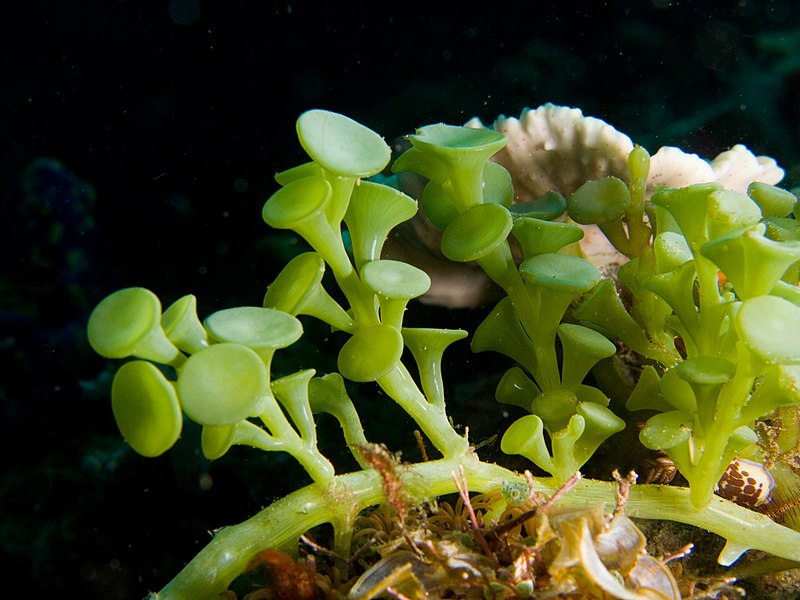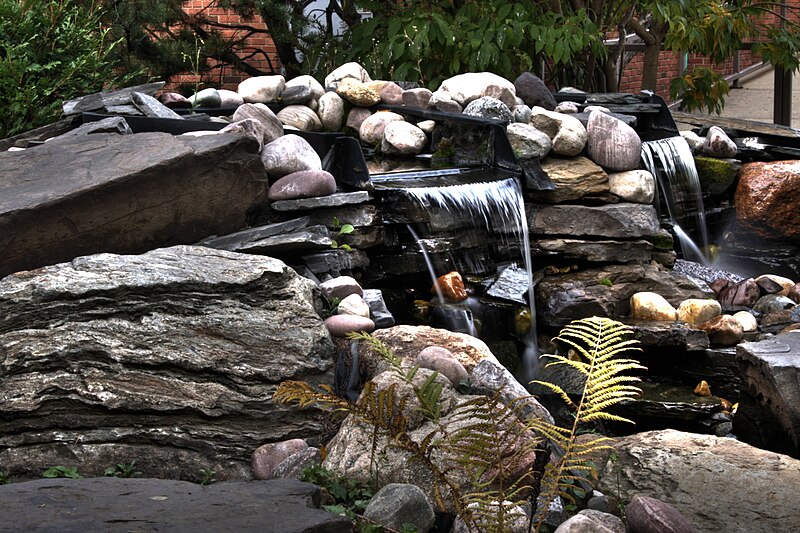 Marilyn Monroe; Tyra Banks; Kate Upton; and now, Bubble Magus. What do they all have in common? CURVES! I’m talking, of course, about the seductive Curve series of skimmers from Bubble Magus. What makes these vixens of skim different, is a dramatically curvy body that builds on the already popular cone skimmer design. This allows the skimmer to perform even better, as the microbubbles take a turbulent-free ride up its serpentine sides. The SP2000 pump is conveniently placed inside of the body, keeping the Curve 7 protein skimmerfrom taking up too much real estate in your sump. The bottom of the skimmer also features a mysterious red plug, which I later found out was to be used if you decided to upgrade or replace the current pump with a different brand, like Sicce. The plug pulls out and allows for differently configured pumps to fit nicely into the body of the Curve. Then you just plug the hole left by the former pump, making the Curve very, very versatile. Read More »
Marilyn Monroe; Tyra Banks; Kate Upton; and now, Bubble Magus. What do they all have in common? CURVES! I’m talking, of course, about the seductive Curve series of skimmers from Bubble Magus. What makes these vixens of skim different, is a dramatically curvy body that builds on the already popular cone skimmer design. This allows the skimmer to perform even better, as the microbubbles take a turbulent-free ride up its serpentine sides. The SP2000 pump is conveniently placed inside of the body, keeping the Curve 7 protein skimmerfrom taking up too much real estate in your sump. The bottom of the skimmer also features a mysterious red plug, which I later found out was to be used if you decided to upgrade or replace the current pump with a different brand, like Sicce. The plug pulls out and allows for differently configured pumps to fit nicely into the body of the Curve. Then you just plug the hole left by the former pump, making the Curve very, very versatile. Read More »
Category Archives: Do-It-Yourself
Feed SubscriptionRefugiums for Marine Aquariums
 You may have heard the term refugium if you’re in the aquarium hobby, but do you know what it is and the benefits it can bring to your set-up? A refugium is essentially a safe area for inverts and macro algae, but it also acts as a biological filter to help control nitrates and phosphates. Refugiums may be part of your sump, a separate hang on back unit, or even another tank plumbed into the display tank system. Generally, it consists of a deep sand bed (DSB), live rock, and macro algae with very slow water flow through the area and a relatively strong light source to support the live plants and inverts you choose to put inside. The light should be in the spectrum between 5,500-8,000k to allow for proper photosynthesis.
You may have heard the term refugium if you’re in the aquarium hobby, but do you know what it is and the benefits it can bring to your set-up? A refugium is essentially a safe area for inverts and macro algae, but it also acts as a biological filter to help control nitrates and phosphates. Refugiums may be part of your sump, a separate hang on back unit, or even another tank plumbed into the display tank system. Generally, it consists of a deep sand bed (DSB), live rock, and macro algae with very slow water flow through the area and a relatively strong light source to support the live plants and inverts you choose to put inside. The light should be in the spectrum between 5,500-8,000k to allow for proper photosynthesis.
Refugium Styles
Let’s take a look at the different styles of refugiums first. One of the most common types is the in-sump refugium. This is a chamber in the sump that has a slow flow (roughly 30% of the water flow from your overflow box) moving through it. This flow rate allows the macro algae and beneficial bacteria to remove waste and nutrients. The best in sump refugium designs are set-up so you can control the flow through the unit, like Trigger Systems Ruby Elite. This style of refugium tends to be one of the most efficient. Read More »
Tadpoles in Aquariums – Watching the Miracle of Metamorphosis
 I can remember foraging in ponds and puddles as a kid, especially once it got warm enough in Spring that the ground was thawed and everything would reappear after a long winter dormancy. How could I not be fascinated by the frogs hidden at the water’s edge and the newts and salamanders I’d find under moist rocks and rotting wood? But what would really grab my curiosity and attention would be the various jelly-like egg masses that would appear along the water’s edge, speckled with black dots and begging to be observed. It was on more than one occasion that my siblings and I gathered a cluster of eggs in a jar to take home for observation. If you have a small spare aquarium and a few other simple pieces of equipment, you can raise amphibian eggs, too, and watch them change from a speck in an egg to a fully developed frog or salamander. Watching tadpoles in aquariums is a great educational project for kids and adults!
I can remember foraging in ponds and puddles as a kid, especially once it got warm enough in Spring that the ground was thawed and everything would reappear after a long winter dormancy. How could I not be fascinated by the frogs hidden at the water’s edge and the newts and salamanders I’d find under moist rocks and rotting wood? But what would really grab my curiosity and attention would be the various jelly-like egg masses that would appear along the water’s edge, speckled with black dots and begging to be observed. It was on more than one occasion that my siblings and I gathered a cluster of eggs in a jar to take home for observation. If you have a small spare aquarium and a few other simple pieces of equipment, you can raise amphibian eggs, too, and watch them change from a speck in an egg to a fully developed frog or salamander. Watching tadpoles in aquariums is a great educational project for kids and adults!
If you have a spare 5 or 10 gallon tank lying around or a small garden or patio pond, prepare to be amazed! Start by filling the tank or pond with clean water. Ideally you’ll let the water cure for at least a day or two, particularly if you have chlorinated municipal water, but you can also use a dechlorinator to make the water safe. Your tadpoles absolutely depend on having fresh, clean water for proper health and development. You’ll be bringing a small amount of source water with you from wherever it is you collect your eggs, but chances are you won’t be carrying several 5 gallon buckets of it back with you. Take care to have an environment prepared for your egg cluster before you bring it home. Don’t put eggs into an occupied aquarium, keep them safe in a separate vessel. Read More »
LED Lighting for the Home Aquarium
 Over the last few years the aquarium hobby has seen a major shift in aquarium lighting, LED lighting is in, and traditional lighting is being replaced. This change has been most noticed in high output lighting sources, like Metal Halide and High Output Fluorescent lighting, where the cost of operation, frequent bulb replacement and high heat emission made consumers eager for an alternative. As a result, the hobby has been flooded with high output, feature rich, LED lighting fixtures for marine aquariums mostly focusing on the demands of reef aquariums and corals. These fixtures are much more affordable than the first generation.
Over the last few years the aquarium hobby has seen a major shift in aquarium lighting, LED lighting is in, and traditional lighting is being replaced. This change has been most noticed in high output lighting sources, like Metal Halide and High Output Fluorescent lighting, where the cost of operation, frequent bulb replacement and high heat emission made consumers eager for an alternative. As a result, the hobby has been flooded with high output, feature rich, LED lighting fixtures for marine aquariums mostly focusing on the demands of reef aquariums and corals. These fixtures are much more affordable than the first generation.
Until recently, the freshwater side of the hobby has seen little attention from most lighting manufacturers, with what little was offered having few features and poor performance, but this is all starting to change. With advancements in LED technology and performance, some of the bigger aquarium lighting manufacturers are shifting their focus to LED over traditional lighting sources. Freshwater aquarium hobbyists are starting to see some cool new lights for their aquariums, with advanced features, high performance and affordability. Read More »
Choosing a Pond Pump for your Pond or Water Feature
 Backyard pond projects can be rewarding if you give plenty of consideration to design and equipment from the start. To build your dream pond or water feature, one of the biggest and most important investments will be the pump, which will bring your display to life. It is important to invest in the right pond pump for your pond or water feature to ensure that the flow rate is appropriate for your design. If you’re planning on including any type of vertical feature like a waterfall in your plan, be sure you are prepared to add a pump powerful enough to make strong flow for the best impact.
Backyard pond projects can be rewarding if you give plenty of consideration to design and equipment from the start. To build your dream pond or water feature, one of the biggest and most important investments will be the pump, which will bring your display to life. It is important to invest in the right pond pump for your pond or water feature to ensure that the flow rate is appropriate for your design. If you’re planning on including any type of vertical feature like a waterfall in your plan, be sure you are prepared to add a pump powerful enough to make strong flow for the best impact.
Types of Pumps
Submersible Pumps are designed to operate completely submerged in your pond, and need a constant flow of water while running to keep them from overheating. Many submersible pond pumps include integrated pre-filters or filtration systems, and possibly pond fountain systems. Submersible pond pumps are very easy to install, however they must be retrieved from the pond to perform maintenance. These pumps are easily concealed on the bottom of the pond, and they won’t disrupt your outdoor activities with unwanted noise or look visually unappealing against your natural display. Debris handling waterfall pumps are designed for large ponds and for supplying water to vertical features including streams and waterfalls. Unique designs allow these pumps pump at high flow rates and to allow small debris to pass through without damaging internal parts. Read More »
 That Fish Blog – Aquarium Advice and Information
That Fish Blog – Aquarium Advice and Information
